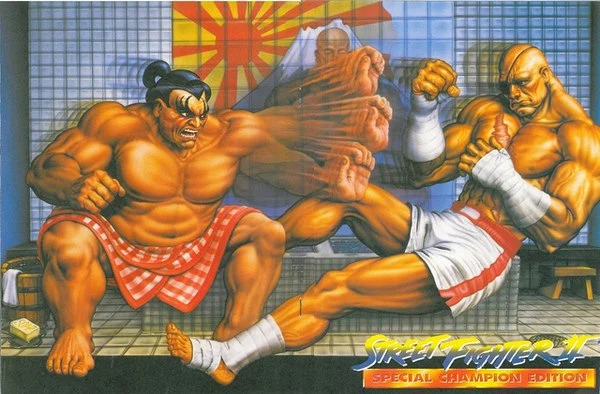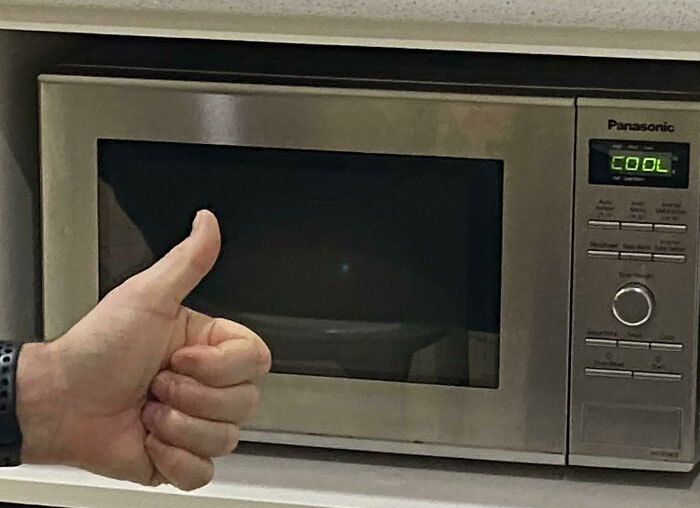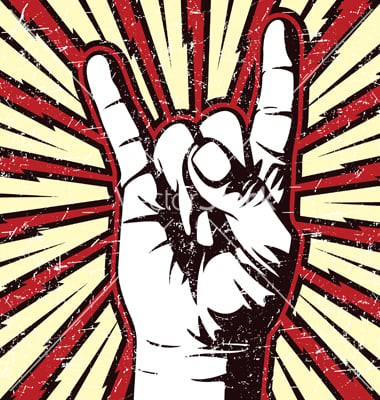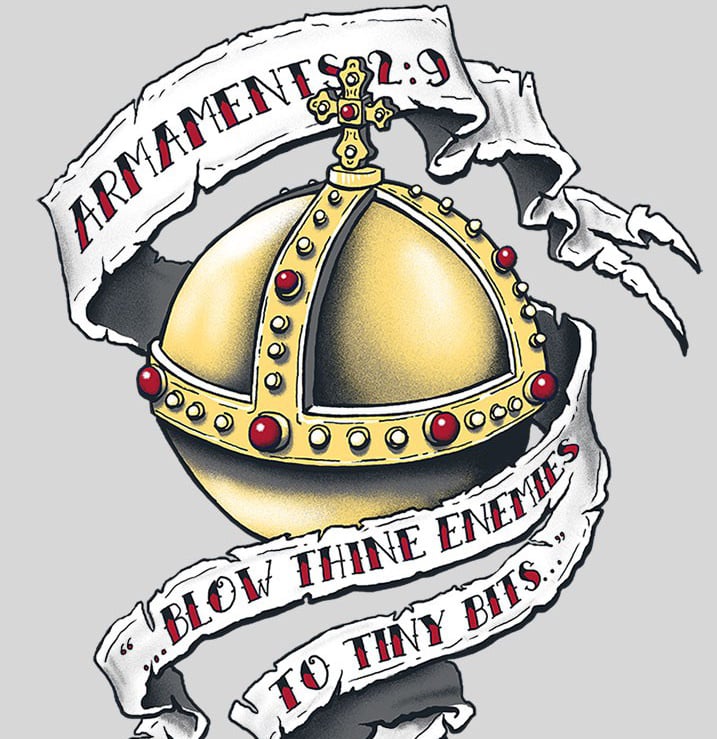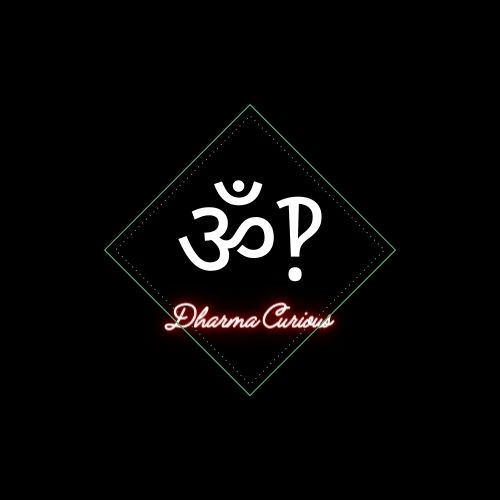I use these all the time, my kids say “just tell me what time it is.”
Seriously, though. It takes less brain processing power and just about the same speech-time to just say the dang time.
If your brain works in digital time, this is true.
Us olds have to translate the other direction.
It’s like hearing someone say “why doesn’t everyone just speak English? Why go through the extra effort of speaking Spanish?” because you assume everyone’s internal monologue is in English.
What do you mean if your brain works in digital time. This doesn’t translate for me and I grew up with regular clocks and wrist watches. All time is the same. A clock with both hands facing 12 is and always has been twelve o’clock. Clock face or digital clock. They give the same time. Comparing two devices that give the same information in different ways to language is absurd.
Your comparison could work if the subject being discussed was 12 vs 24 hour time keeping. Then there is a translation between the two.
Analog clocks lend themselves better to thinking in fractions of an hour or day, like this post is talking about, as an hour and a half day are both represented as a circle
Digital clocks lend themselves better to thinking in terms of number of minutes and hours directly. When working numerically, fractions of 60 are generally less intuitive, and fractions of 12 often so as well. Most people who don’t work with angles often think of fractions in terms of percent, or powers of two.
“Quarter past” kind of tweaks the brain wrong when a quarter is intuitively 25.
fractions of 12 are unintuitive
Really? I’ve always found them very pleasing.
They chose 12 precisely because it’s easy to divide!
I wish our numeric system was base 12 instead of base 10!
You’re on Lemmy, of course you like fractions of 12. It is a very convenient base, having so many factors, but most people don’t think like that
That might be the most obscure stereotype I’ve ever read. 😆
It’s also precision. I think this is the biggest thing we’ve lost is some expression of precision.
- 11:45 from a digital clock is very precise. You expect something at exactly that time, and get more impatient with vagaries of traffic or delays or clocks that aren’t synched, or just that people aren’t digital
- “quarter of” implies less precision. If I have to wait five minutes, you’re still not late. Regular human activity in the real world is not exact so allowing for inaccuracy is both less stressful and more practical
Actually a digital clock with both hands pointing at twelve is not a digital clock.
oh i think this may be a cultural thing, here in europe when we say “digital time” we specifically mean 24-hour time because “AM/PM” isn’t used here.
It’s the difference between saying “dinner’s at seven” and “lunch ends at 13:30”
Ahhh!!! That totally makes sense. I took the comment to be about digital clocks specifically vs analog clocks. Not about the type of time keeping. Then the translation analogy totally makes sense and works! Gotta love learning new things from people. Thanks Swedneck!
When people report the time they aren’t reporting their internal dialogue they’re reading what it says on the display. What it says on the display is “four twenty three” not “halfway between quarter and half past four”.
OP didn’t say anything about reading time off a digital clock.
What about the opposite scenario of reporting the time you read off an analog clock? Would you translate to digital first?
In your specific scenario, sure, it would require extra work to convert it, so I’d just read it as is.
But when making plans, and especially spans between two different times, my brain thinks of time as portions of a pie chart, and I’d have to translate 3/4 to 45 minutes.
It’s inefficient is what I’m suggesting.
It is a one syllable difference, at most. Fif-teen versus Quar-ter-Past. Or Thir-ty versus Half-past. And for-ty-five versus quar-ter-till.
But it is also about precision. If I say “Let’s meet up at 4:45” that implies a lot more specificity than “let’s meet at quarter to five”. The firmer is an exact time people should meet at and the latter is “around that time”.
https://www.youtube.com/watch?v=NeopkvAP-ag goes into the difference between analog and digital time and what that means with thought processes. But a lot of it boils down to thinking in terms of “parts of a whole” versus “specific times”.
I’m curious why it got the name digital time.
Because it is expressed as digits (numbers)
Here is an alternative Piped link(s):
https://www.piped.video/watch?v=NeopkvAP-ag
Piped is a privacy-respecting open-source alternative frontend to YouTube.
I’m open-source; check me out at GitHub.
it’s not like people generally pronounce it fully anyways, it’ll come out as “qua’tr” or “quartah” depending on dialect
All of which is still two syllables?
The most inefficient part of human brain is having to consciously process things. So going with whatever patterns you’re used to is always going to be faster
I think there’s bigger problems if you have to process the time. If you’ve never heard it in your life, maybe you’d stop and think, but it’s honestly just something you learn and know, no thinking required.
It’s like when people don’t know 24 hour time, when it’s something you’ve just grown up with, there’s no thinking and then you are confused when you hear people have to think about it or “calculate”.
24 hr time should be the global standard too, IMO. Reduce all possibilities of confusion, I say.
To be honest, it’s mainly just USA that just use 12-hour (and call 24-hour “military time”?), the large majority of the world use both interchangeably.
Also adopt UTC as global time while we’re improving things. No more messing around with all those different time zones, one is enough.
If we’re doing this I’m referring to the hour past midnight as 0:XX and not 24:XX and you can’t stop me
Maybe I’m missing the joke, but I’m pretty sure 00:XX is correct.
Please do not judge me too harshly if I’m wooshing.
so would just saying am pm all the time.
I have a friend that had issues telling time with analogue clocks when we studied together in a university. It really is just the matter of what you grew up with.
My kids also hate that all my devices use 24 hour time >_>
I’ve been using 24 hour time for the past few years and I still have trouble with it from time to time and have to calculate it in my head.
Also, a different example of something similar is how old I am. Despite knowing my birth year, I still struggle recalling how old I am I still have to take a moment to calculate it.
I did the same thing with my parents, mostly because they’d just say “quarter after” but would never say any number. If you made a word cloud of everything I’ve ever said in my life, “after what” would be gigantic in the center with every other word tiny around the edges.
This just triggered a deep memory from within me. My brother used to say “half past” when I asked him the time, and when I would say “half past what?” the response was always “Half past the monkeys ass, a quarter to his balls”
I still don’t know what it means or where it came from, but when I was 8 years old, it was hilarious.
Even worse than that imo is ‘quarter of’. I swear to god it’s been used to mean both before or after whatever hour they’re talking about
mfrs think I know what hours its close to when I probably don’t know the day and am lucky to know what month it is.
Anyone using “quarter of” to mean X:15 is just incorrect. That’s “quarter after”.
When you say quarter of, you are supposed to say the next hour. Quarter after 4 is a quarter of 5.
That’s… I guess that makes sense but that’s really weird and ambiguous.
I would not have guessed that meaning of “of.” I think we should stick to “til” or “past” for clarity.
Quarter after four is 4:15.
Quarter of five is 4:45. Also quarter to five and quarter til five.
I’m seeing other comments that suggest I might be wrong. Especially in regards to other languages.
EVERY TIME
“It’s a third past the hour, ya dang kids!”
You’re failing at your most important job.
Old man yelling at clouds checking in. I understand the prevalence of digital, but still can’t wrap my head around younger people not understanding how to read an analog clock.
Of course the kids don’t know how to read them. Kids rarely encounter analog clocks and when they do, they have several digital clocks within arms length. Most people wouldn’t reach for a slide rule when they have a calculator.
And to be fair, analog clocks are objectively worse than digital clocks in every way aside from aesthetics.
I grew up around both, for simply telling time, digital is far better. Analog though to me gives a better sense of the passage of time I guess you could call it? Like, you can see the hour hand has moved a distance after a little while; or if I want to do something for half an hour, I just have to watch for when the minute hand is pointing 180 degrees away from where it was when I started, things like that.
My kid has analog clocks on her school tests and homework as questions. They are teaching them to read them, most just don’t care for the reasons you stated.
When I was in elementary school, my teacher asked us which kind of clock is easier to read. I said “digital, because it shows the numbers”. She told me “no, analog is easier to read, because you just look at it and know the time without reading the numbers”.
I thought that was stupid back then, and it’s still stupid now, because I have to calculate the time whenever I need to read an analog clock. Still can’t read them quickly.
As someone who now prefers digital, but grew up with mostly analog, I think I can understand what your teacher was trying to say, and it’s really a difference in how the brain is interpreting time itself.
When your internal mental state of time is represented in numbers, then analog clocks feel awkward and clunky, because to use them you have to look at the clock, think “okay the big hand is here, the little hand is there, so that’s 7:45. School starts at 8, so 15 mins to school”. It’s like having to translate through a foreign language and then back to your own.
For people who use analog clocks almost exclusively, as I did in childhood, then your concept of time actually begins to become directly correlated to the position of the hands themselves. Not the numbers the hands are pointing at, but the shape the hands make on the clock face. I think what your elementary teacher was trying to say is that the clock itself becomes a direct physical representation of the ‘size’ of time.
Someone whose brain is working like that looks at an analog clock and immediately thinks “It’s quarter to school” - without any numbers being involved at all. In fact you could completely remove all numbers and markings from the clock face, and the physical comprehension of time would still function equally as well for that person.
So yeah, I understand why analog is bad for people who don’t like it, but I think I see the appeal for people who do.
If your mental model of time is based on analog clocks, then when looking at a digital clock you have to translate it back to clock hands to know what it means, and that’s slower than immediately seeing the analog clock face.
Sure, but it’s stupid to tell kids “objectively, analog is easier”, especially when those kids most likely grew up with digital clocks.
Yeah, absolutely.
That’s funny because I read a digital clock and visualise an analogue clock to understand the time better.
as someone with adhd I much prefer analogue clocks, they allow me to see time through physical distance of the clock hands which helps with perceiving it, numbers don’t do that for me
100% yes! I have pretty intense time blindness due to ADHD. The visual representation of time in analog clocks helps me.
Younger people dont know how to read analog clocks?
Im young and neither i nor anyone i know doesnt know how to read an analog clock
They stopped teaching it in schools around TX a long time ago. High Schoolers nowadays were shocked when I said that reading clocks was a 1st grade skill because they weren’t taught to tell time.
Schools I’ve worked at have all had analog clocks for all their time pieces, unless a particular teacher brought their own. Or the clocks on computers, but those weren’t always consistently reliable.
I remember that it was like that when I was in school, but have only come across 5 or so analog clocks in schools over the last 10 years. They even have digital clocks in the hallways. I’ve also not been inside elementary schools, so idk if analog clocks are still present there.
As a side effect of that, learning modular arithmetic later becomes more difficult.
deleted by creator
Interesting, I’ve worked in several districts around the state and in the last decade haven’t come across students that can tell time from an analog clock.
I tried to raise my kids with analog clocks, specifically because they’d see digital everywhere else. It didn’t work. They know how to use an analog clock but find it more natural to pull out their phone
Actually, the barbarians won. I’ve mostly given up on analog because they’re wrong too often. My digital clocks rely on power and are synched, so they’re either correct or off. My analog clocks are battery and don’t synch with anything so it might be wrong and it might not be obvious. (While I’ve looked into analog clocks that synch with something, they generally fail the “looks nice” part)
Come to Germany. We still argue about how to properly say that. In some regions “quarter nine” means 8:15.
Could be worse. Could be Dutch.
What time is it?
Ten over half eight.
…
7:40
I see no problem with this? Makes sense.
…what
In Spanish its pretty common to express time past 30 as next hour minus time left. So 8:45 can be expressed as 9 minus 15
I feel this is the way that best reflects how you look at an analog clock. First hours then minutes. It’d be interesting to know if the amount of people saying time the analog way depends on the system used.
Same in English, except that we say “half past” for xx:30. 08:35 is “twenty-five to nine”.
deleted by creator
8:45, 9:15
Seriously . If I ever heard someone say “quarter nine” as a time, those are the only two I would ever consider to be possible options
10 ÷ .5x8
Why WOULD it mean 8:15? The only two options I would think of are 8:45 and 9:15.
This is why I don’t talk to members of the British Isles, they do this.
KDE for years had a clock option called “fuzzy clock” where you could set the granularity of time, either in 5, 10, 15, 20, 30, or 60 minute resolution. So it would just say “five to six” or whatever in words. It was designed to keep you from clock watching while working. Not sure if it exists anymore :)
It does! I recently switched to Linux, and when messing with some of the options, I found that. It’s pretty neat tbh
I like how it sometimes if you set the fuzziness to max it says just “lunch” or I think “second breakfast”
Limmy used to have a talking clock on his website that’d say stuff like “just gone half two” if it was 14:32 or “coming up on three” at 14:58 or whatever. Surprisingly good idea.
I went to public school in the 80s and every classroom had a very large analog clock on the wall. Even back then, it mildly annoyed me when teachers and other adults would say “half past” and so on. It always sounded archaic to my ears, even 40+ years ago.
I also get annoyed when people say “two thousand and twenty-four” for the year. Just say “twenty twenty-four”. We didn’t say “one thousand nine-hundred and eighty-four” back in the day, we said “nineteen eighty-four”.
There was a solid decade where the pattern broke, and so e people didn’t get back into it.
Two thousand, two thousand one etc don’t really work as “twenty oh-one”, etc.
deleted by creator
Calling them “the aughts” is also the best way I’ve found to refer to that decade
I was taught in the '80s that you shouldn’t use ‘and’ in a number that isn’t followed by a decimal portion (e.g. 23 and 4 hundredths). I’ve seen various back-and-forth on that topic over the years.
That sounds familiar. Applies to check writing, for those who still do that.
It goes
- nineteen ninety-eight
- nineteen ninety-nine
- two thousand
- two thousand one
- two thousand two
- …
- two thousand nine
- twenty ten
- twenty eleven
- etc
And stay offa mah lawn!
This is literally the first time I’ve ever heard the term “analog clock”.
Also, the title of the book (and film) is not 1984. It’s Nineteen Eighty-Four.
But I’m not a boomer, I’m genx, so whatever. I’m outta heeeere… 😎
one thousand nine hundred and eighty-four
What else would you call an analog clock?
A clock
Can you really say “1984” with confidence either way given Big Brother?
deleted by creator
Nowadays is easier just to say the precise time down to the minute.
I still round, I’ll call 3:11 3:10 when the precision doesn’t matter.
In a way it is a bit sad though. It gives a more rigid feeling to things. “about quarter past” would usually be something between :10 and :20. There is room for interpretation and time feels more available with less demanded precision.
On the other hand, quarter inch and half mile and such are meant to be precise?
They are? I wouldn’t talk about fractions of cm or km if I wanted to be precise, I would say 2,5 mm or 500 m. Half a km is approximate, for when accuracy isn’t that relevant.
Yeah, imperial units are terrible. 1/3 cup nuts, 1/2 cup flour…
More granular units exist, but they’re not easier to use and so no one does. The only reason anyone would refuse to switch to metric is because “it’s always been done that way around here”
Edit: typo
Strange, nothing has changed in my experience. It’s a general way to tell the time, not exclusive to analog clocks.
Why would the use of analog or digital clocks affect that? Quarter is 1/4th of an hour = 15 minutes. I don’t see the correlation and I can’t confirm it from personal experience either.
The way information is presented impacts how it is stored. If you look at a clock face and want to know what time it is it’s very easy to visualize the passage of time as fractional because the time is presented to you without numbers being the primary focus and instead divisions. Mentally it is easier for you then to grapple with time as a fractional division. However, if instead of presenting the day as being divides into 2 portions of 12 hours, themselves divided into 12 subdivisions, those then further divided into 12 subdivisions of the 5tha of those divisions, you presented it as a simple read out the passage of time feels more like a linear stream mostly indistinguishable.
How we present time changes how we think about time, which then changes how we describe time.
Man language is cool…
what do you know about Marshall McLuhan? I’m hoping it’s not very much, because you seem to be in a really good place to receive what he has to teach right now. Google the phrase “the medium is the message” if you’d like to know more.
I think it’s because, visually, 3:15 puts the minute hand a quarter of the way around the clock face. Digital clocks don’t have a corresponding visual.
I think it’s a rounding thing. Looking at an analog clock, you’ll see at a glance that the hand is about halfway around the circle but it takes an additional processing step to determine whether it’s 6:31 or 6:29. Looking at a digital clock, you’ll see that it’s 6:29 first and then it takes another step of processing to determine that 29 minutes is roughly halfway through the hour.
I was thinking the other day that I never hear the phrase “bottom of the hour” (meaning __:30) anymore.
Shit, I’m 27 and never heard that in my life
Top of the hour to you, sir/ma’am
Toppa tha marnin’ to ya!
Not in Norway lol. If you want to meet up at 11:20 you say “ti på halv tolv” meaning "ten minutes before half hour before twelve.
Yeah, it took me a while to wrap my head around it too.Laughs in Austrian.
The convention for (15-minute) fractional hours is to name the fraction of the time from the previous hour to the next one.
eg:
3:15 -> “viertel vier” = “quarter four”
3:30 -> “halb vier” (“hoiba viere” in dialekt) = “half four”
3:45 -> “dreiviertel vier” = “three quarters four”In Finland we use:
3:15 viisitoista yli kolme = fifteen over three.
3:30 puoli neljä = half four.
3:45 viisitoista vaille neljä = fifteen short of four.We also use 24 hour clocks but if the dinner is at 17:30, it will just be said to be at half six and you figure am/pm out of context - if it’s ambiguous, we say “six in the morning / six in the evening”.
In English, when they ask the time, we reply: Puolivälissä ohitti apinan perse. Because in English Puolivälissä rhymes with perse.
I generally avoided use of the quarter/half shorthand because people often say it with no context.
“What time is it?”
“Half past.”
Half past what? Sort of an assumption that the asker has a clue what hour it is, but if they knew, why would they ask the time?
I’m not sad to see the phrases go.
Never actually heard anyone exclude the hour, it’s always “half past 3”, “quarter to 8”, “5 till 6”, etc
That’s why people usually say Half past 5, in my experience anyway.
My childhood was filled with people doing that. It drove me nuts.
A quarter to 1400 does sound a bit odd.
[deleted]
24h time makes way more sense, especially when working with servers late at night. Hate 12 hour time’s annoying AM/PM issues, particularly when typing the time into server refreshes or dealing with 11pm - 12pm (am) slip ups.
I don’t think I’ve ever seen a server in a corporate environment running on anything other than 24-hour UTC time. That sounds like a nightmare.
That doesn’t make sense to me. It would be a quarter to 14 if you wanted to say 14 instead of 2.
I wrote that it sounds odd, which it does. I used to work a job that used military time. Almost everyone wore a digital watch but many of the offices had analog clocks. If I was looking at an analog clock I’d say 'quarter to 2" but if I looked at my watch or the screen I’d probably say 1345.
It does not make sense to convert digits to figure of speech, just for the fuck of it.
The practice still has one very important application:
“What time is it?”
“Half past a monkey’s ass, quarter to his balls”
Our family’s was “freckle past a hair and time to get a watch”
I feel this comment betrays a misunderstanding of what language even is. Saying it like “two forty-five” or whatever is a figure of speech as much as “quarter to three” is.
You knew exactly what I meant, you’re just being pedantic.
No, I meant it. “Two forty-five” is a figure of speech. If you were giving the time in exact terms you’d say something like “it’s been two hours and forty-five minutes since midday/midnight”. You’re just stuck in this idea that your way of expressing it is the right one.
See my previous comment.
That’s the most arrogant reply you could’ve written. And I’ve just clicked on your name and seen your other comments, and it all makes sense. Wind your neck in and go outside.
See my comment previous to the last.











